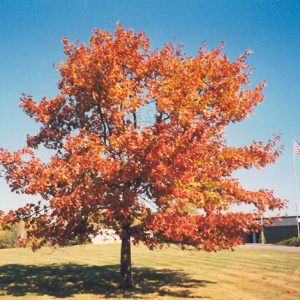Description
Growth & Care
| USDA Plant Hardiness Zone | 3b |
| Growth Rate | Average |
| Recommended Pruning Method | Prune In Full Leaf |
Foliage
| Foliage Type | Deciduous |
| Fall Color | Orange |
| Plant Form | Upright Spreading |
Flowers
| Flower Period | Spring |
| Flower Color | Green |
| Flower Fragrance | Unscented |
Additional Categories
| Additional Category | Maple |
| Landscape Application | Accent, Shade |
Details
Planting & Growing
Bigtooth Maple will grow to be about 45 feet tall at maturity, with a spread of 30 feet. It has a high canopy with a typical clearance of 7 feet from the ground, and should not be planted underneath power lines. As it matures, the lower branches of this tree can be strategically removed to create a high enough canopy to support unobstructed human traffic underneath. It grows at a medium rate, and under ideal conditions can be expected to live for 80 years or more.
This tree should only be grown in full sunlight. It prefers to grow in average to moist conditions, and shouldn't be allowed to dry out. It is not particular as to soil type, but has a definite preference for acidic soils, and is subject to chlorosis (yellowing) of the foliage in alkaline soils. It is highly tolerant of urban pollution and will even thrive in inner city environments. This species is native to parts of North America.
Landscape Attributes
Bigtooth Maple is a deciduous tree with an upright spreading habit of growth. Its average texture blends into the landscape, but can be balanced by one or two finer or coarser trees or shrubs for an effective composition.
This is a relatively low maintenance tree, and should only be pruned in summer after the leaves have fully developed, as it may 'bleed' sap if pruned in late winter or early spring. It has no significant negative characteristics.
Bigtooth Maple is recommended for the following landscape applications:
Accent, Shade
Ornamental Features
Bigtooth Maple is primarily valued in the landscape for its ornamental upright and spreading habit of growth. It has dark green deciduous foliage. The glossy lobed leaves turn outstanding shades of orange and red in the fall. The furrowed gray bark adds an interesting dimension to the landscape.




